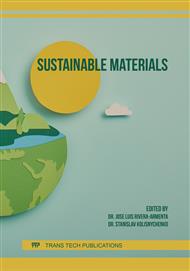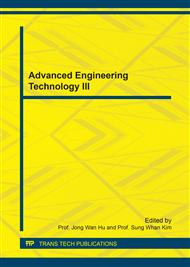p.20
p.25
p.30
p.36
p.43
p.49
p.54
p.60
p.64
Preliminary Investigation on Improving Biopolymer Properties Using Nanocellulose from Tropical Forest Species
Abstract:
Nanotechnology currently receives considerable attention as a technology for the future. Nanocellulose, in particular, has been reported as a renewable source for industrial applications. As an emerging sustainable and advanced technology, nanocellulose extraction process and applications are being studied extensively. Nanocellulose in the form of nanocrystalline (NCC) or nanofibrillated (NFC) has many applications, mainly in enhancing the mechanical strength of composite materials, or as precursors for supercapacitors, aerogel, hydrogel and membrane fabrication. In this study, microbial hydrolysis combined with mechanical treatment was used as an alternative method to produce nanocellulose. Commercial cellulase enzyme from Trichoderma reesei (ATCC 26921) was used to hydrolyse bleached soda cellulose from Macaranga, a tropical forest species. The enzymatic hydrolysis was followed by homogenization and sonication. The resulting nanocellulose was incorporated into two polymers, namely chitosan and polyvinyl alcohol (PVA) at 3 and 10% concentrations. Surface morphology of the films was investigated by field emission scanning electron microscope (FESEM) and it was found that NCC disperses better into PVA matrix compared to chitosan matrix. However, at the low levels of nanocellulose added, no significant thermal property improvement was observed.
Info:
Periodical:
Pages:
43-48
Citation:
Online since:
June 2017
Authors:
Keywords:
Price:
Сopyright:
© 2017 Trans Tech Publications Ltd. All Rights Reserved
Share:
Citation:



